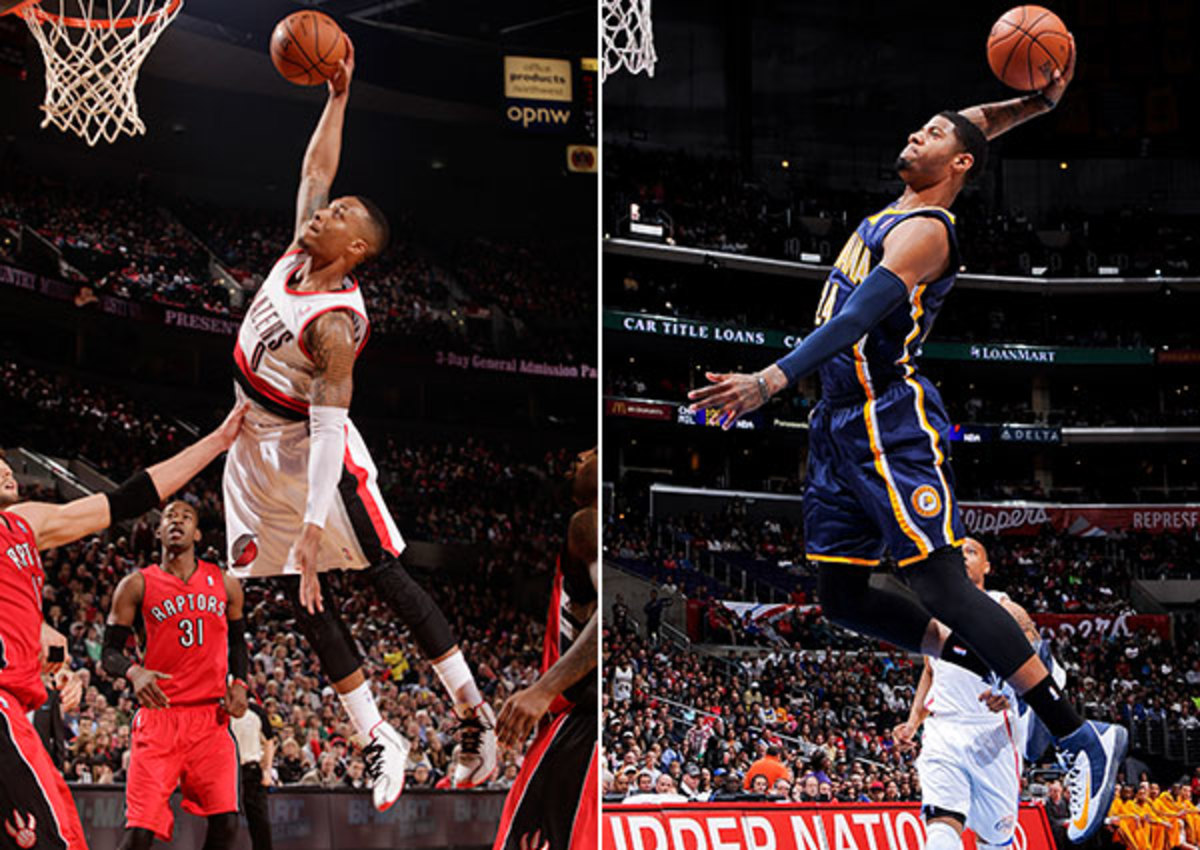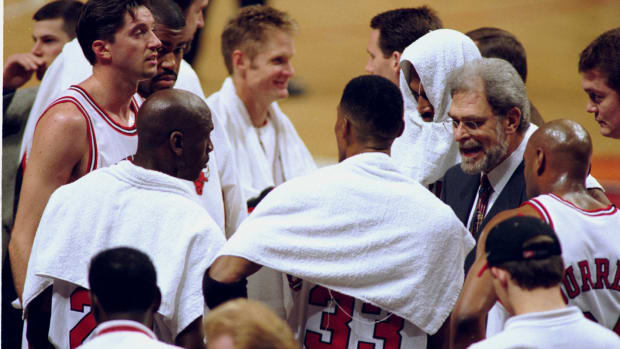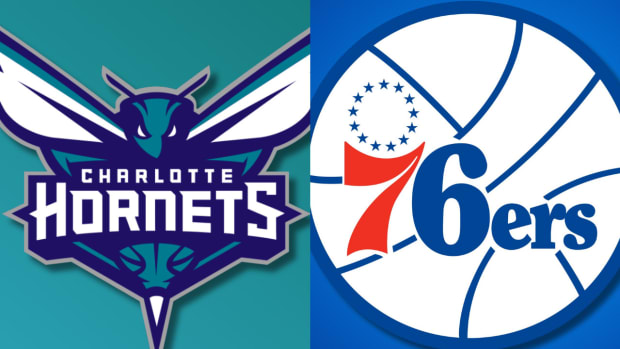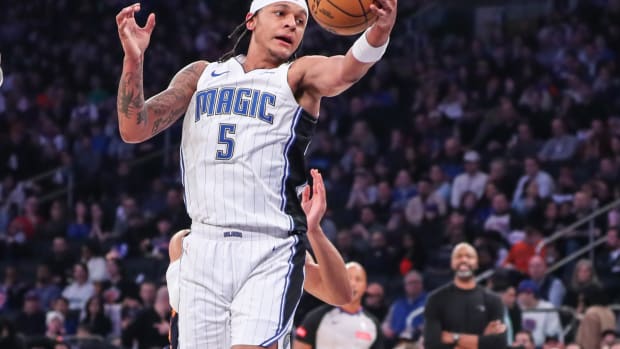Weighing the pros and cons of the NBA Slam Dunk Contest's new format
Damian Lillard (left) and Paul George (right) will dunk on behalf of their conferences. (Getty Images)
You have reached your limit of 4 premium articles
Register your email to get 1 more
The Slam Dunk Contest will have a new format when its six participants take the court at All-Star Weekend in New Orleans on Feb. 15.
This year's contest will feature a more pronounced conference vs. conference format, as well as the introduction of "freestyle" and "battle" rounds. For the first time, all members of the winning conference will be considered "Slam Dunk Contest champions," and the fan vote will determine a "Dunker of the Night."
Representing the Eastern Conference in the contest will be Paul George (Pacers), Terrence Ross (Raptors) and John Wall (Wizards).
Representing the Western Conference will be Damian Lillard (Blazers), Harrison Barnes (Warriors) and Ben McLemore (Kings).
RELATED: Breaking down the Slam Dunk Contest field
The opening round -- dubbed the "Freestyle Round" -- will give the dunkers from the East and West 90 seconds to perform as many dunks as they like. All three dunkers from each conference will be dunking in the same 90-second window and they will be allowed to assist each other during the time period. Rather than handing out individual scores, as in past years, the judges will simply vote to choose a winning conference (East or West). The winning conference will then be able to decide whether they go first or second in the contest's second round.
The second round -- dubbed the "Battle Round" -- will feature a series of one-on-one match-ups between an East dunker and a West dunker. The judges will determine who wins each match-up, and the loser will be eliminated. The first conference to win three match-ups will win the competition, and all three of its team members will be considered "Slam Dunk Contest champions."
Finally, fans will be able to vote for a single "Dunker of the Night" via text message, Twitter and on NBA.com.
Let's take a look at the pros and cons of the new format.
Pros
- The opening round should serve as a nice warm-up period for the dunkers and it should help build the anticipation for the later rounds. It's hard to come right out of the gate with a top-shelf effort, and the freestyle nature of the first round should help the competitors get up to speed.
- Putting all three dunkers together from each conference into the same 90-second window should make for an exciting, fast-paced opening round. Nothing is worse than a Dunk Contest that drags due to missed dunks, and the presence of three guys should make for a bang-bang dunking assault.
- The new method for incorporating the judges should reduce the impact of their subjective ratings. No two judges use the same standards or have the same "taste," and it's difficult to keep a consistent voting method from dunk-to-dunk and round-to-round. The new system will lean more heavily on the total output in the first round and on a specific, easy-to-digest one-on-one match-up in the second round. Theoretically, this should reduce the potential for controversies.
- The second round format should ensure that there is legit tension from start-to-finish, almost like penalty kicks in soccer. Every dunk matters and the win-or-go-home pressure should build really nicely if everything goes according to plan.
- The Slam Dunk Contest will raise a total of $125,000, with the winning conference getting to donate $100,000 of that money to its charity. That should be more than enough motivation to encourage a high quality standard.
Cons
- It's unclear why there is such an emphasis on the conferences, particularly in an event that is, by nature and by history, an individual contest. The thought of Michael Jordan and Dominique Wilkins "teaming up" during a Dunk Contest from back in the 1980s feels wrong on every level.
- There appears to be an imbalance between the conferences, as the East has both of the field's Dunk Contest veterans (George and Ross), while the West has both of the contest's dark horses (Lillard and McLemore).
- The format does not allow for a potential "George vs. Ross" head-to-head match-up, as they are on the same team. If those two players -- or any two players from the same conference -- prove to be the contest's best dunkers, the entire contest is at risk of being underwhelming without a final showdown.
- Even though individual dunk ratings can be subjective, there's something magical about that "10" sign that won't be captured with a simple "East" or "West" vote. That goes double for the coveted "50" dunk, which is a thing of the past, at least for this year.
- Although the dunkers within the same conference can help each other out in the opening round, it's not clear what role (if any) that props will play this year. Traditionalists might be happy that the props are being downplayed, but it must be noted that many of the most memorable dunks from recent years (Cupcake, Kia, Superman, etc.) did incorporate props.
- Crowning three "champions" out of six participants has a very middle school feel to it. Everyone gets a ribbon!
- To make matters worse, it's possible that the "Dunker of the Night" could wind up being one of the three players from the losing conference. In other words, four of the six participants could leave the contest as "winners" in one form or another. The Slam Dunk Contest should feel more like a heavyweight title fight and less like an all-comers track meet, and the current set-up runs the risk of dimming the victor's spotlight. Hopefully the logistics work out such that the focus stays on the "Dunker of the Night" once the contest is complete.
The great fear in changing up the Slam Dunk Contest's format so dramatically is that it would get in the way of what is a strong field. Upon further review, it seems unlikely that the new format will "ruin" anything. The opening round should be fast and furious, and ripe for some unexpected surprises, while the second round has the potential for extended drama, depending on how well the match-ups lineup and how well balanced the dunkers from the two conferences wind up being.




































